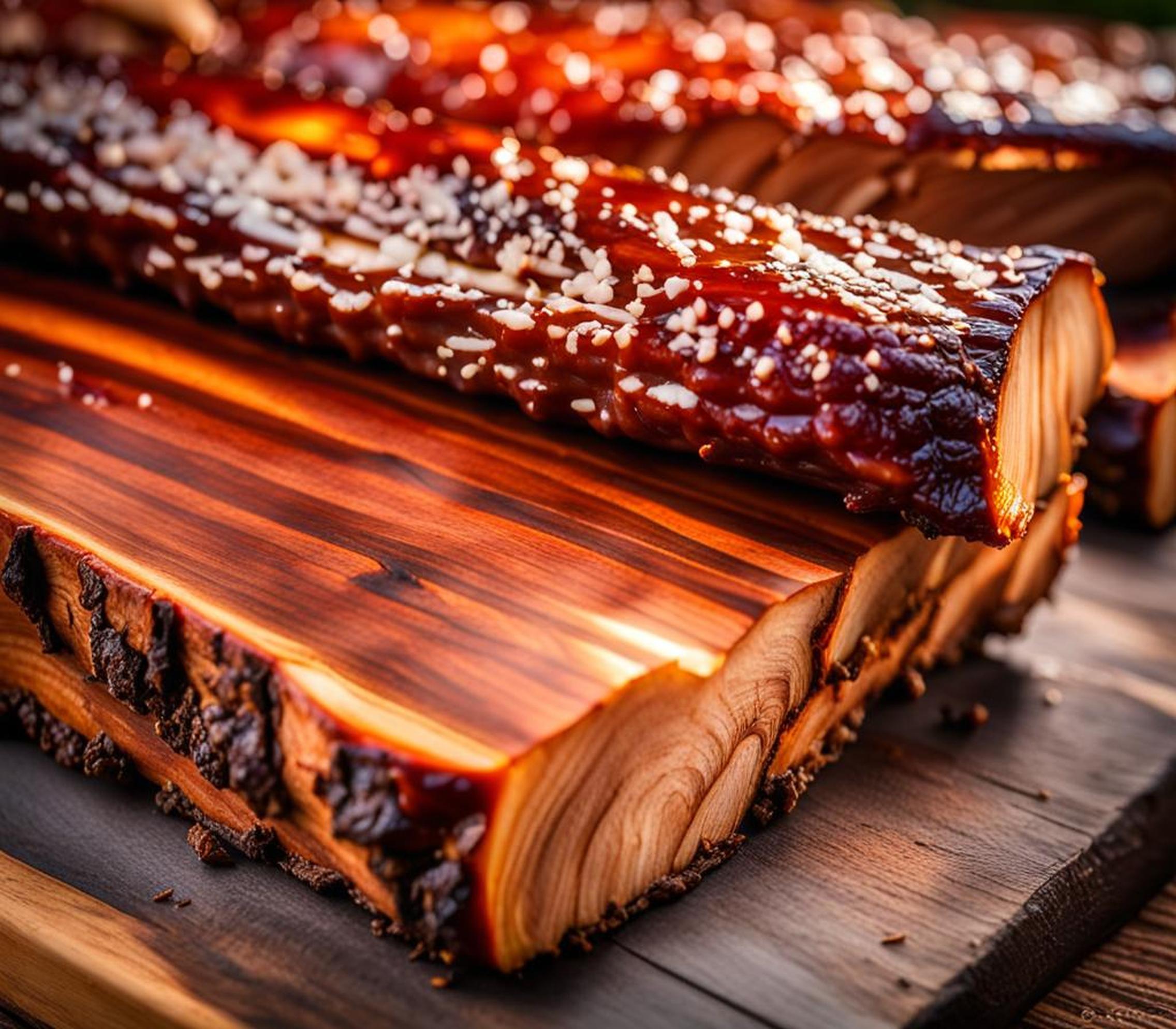Competition barbecue teams know that perfectly smoking a brisket is both an art and a science. While seasoning, temperature control, and rest time all play key roles, perhaps nothing is as important as choosing the ideal wood for generating flawless smoke flavor.
For backyard smokers aiming to achieve competition-caliber results, oak, hickory, pecan, and certain fruitwoods stand above the rest. Their ability to impart ideal aromas and sauce-friendly flavors make them prime for smoking brisket that will have judges begging for more.

Hardwoods: The Gold Standard for Brisket Smoking
Hardwoods like oak, pecan, and hickory represent the gold standard when it comes to smoking brisket for competitions. Their dense quality allows them to burn slowly and steadily while generating mild to strong, rich smoke.
Oak Wood
Varieties of oak, especially post oak, lend a mildly sweet and nutty smoke flavor. Oak burns evenly for hours, making it easy to maintain low temperature over a long smoke. Its mellow flavor profile enhances bark development without overpowering the beef.
Many competition pitmasters love using oak for brisket smoking. Its ability to complement, not mask, the meat’s natural flavors results in excellent tasting finished product.
Pecan Wood
The pecan tree is in the same family as hickories, and its wood imparts very similar smoking qualities. Pecan wood produces a subtle, nutty smoke flavor when burnt. It has a lower moisture content than many wood types, allowing it to burn cool for excellent temperature control.
With its sweetness playing beautifully against brisket’s savory notes, pecan wood rates as one of the most popular choices for competition barbecuers in Texas and across the southern barbecue belt.
Hickory Wood
No list of go-to brisket smoking woods would be complete without classic hickory. Hickory imparts a robust, smoky, and savory flavor that beautifully complements beef.
As a strong, heavy smoke wood, a little hickory goes a long way. Competition pitmasters tend to use it sparingly or mixed with other woods to prevent oversmoking. Too much hickory smoke can leave brisket tasting bitter.
Fruitwoods: For Milder Smoke Flavor
While oak, pecan, and hickory bring classic barbecue wood flavor, fruitwoods like cherry, apple, and peach provide milder smoke great for beginners or those who prefer less smoky brisket.
Cherry Wood
Cherry wood generates an exceptionally sweet, fruity smoke perfume. Its delicate flavor helps brisket develop a beautiful dark, competition-worthy bark without overwhelming the palate.
Many award-winning barbecue teams adore cherry wood for brisket smoking. They appreciate how it adds just enough background flavor while allowing the beef’s tastes to take center stage.
Apple Wood
Like cherry, apple wood brings a pleasantly sweet and delicate smoke flavor to the party. It subtly enhances brisket’s savory Umami tastes by contributing light fruitiness.
Apple wood smoke works beautifully when blended with a bolder hardwood like oak or hickory. By itself, it can lack the punch needed for competition success.
Other Fruitwood Options
Peach, apricot, and grapevine trimmings also impart mild, fruity smoke notes. While less common for competition barbecue, their light flavors may appeal to teams looking for a unique twist.
Mesquite, while a popular backyard brisket wood, often overpowers in competition settings. Save it for grilling steaks and burgers instead.
To smoke brisket like the pros, keep these wood selection and usage tips in mind:
- Mix lighter and heavier woods for depth
- Experiment with less common woods like alder, mulberry, or plum
- Use large chunks over chips for steady smoke release
- Always smoke with high-quality, well-seasoned wood
Competition barbecue success requires truly mastering wood selection and smoke generation. By understanding how different woods interact with brisket to create ideal flavors, your team’s chances of winning shiny new trophies will skyrocket.
Now get outside and start practicing! Enjoy experimenting with fruitwoods, hardwoods, wood chunks, and different smoke levels while striving for perfect slices of tobacco-spiced beef heaven.
